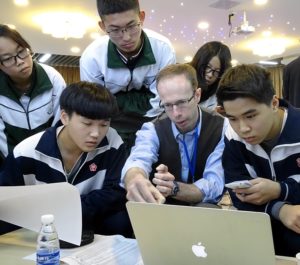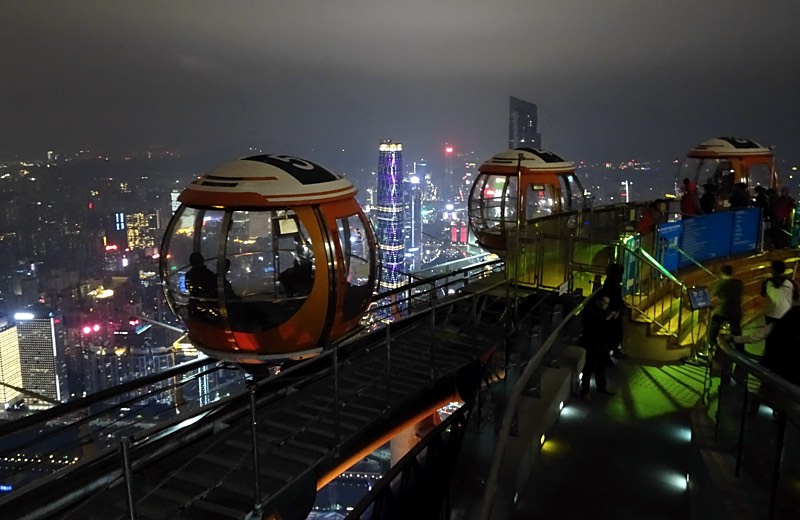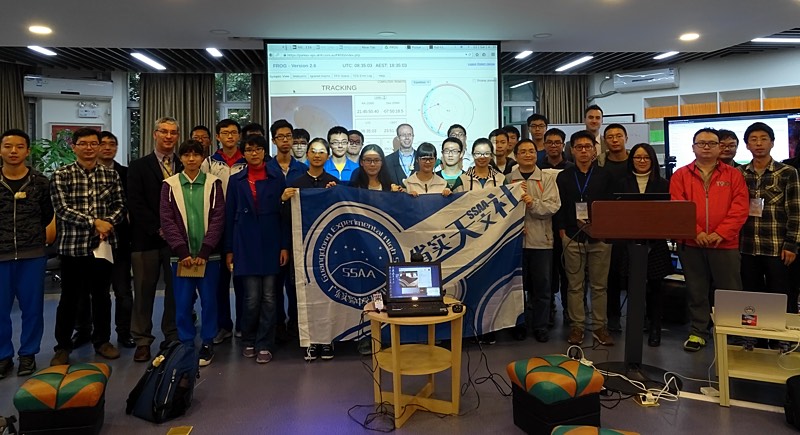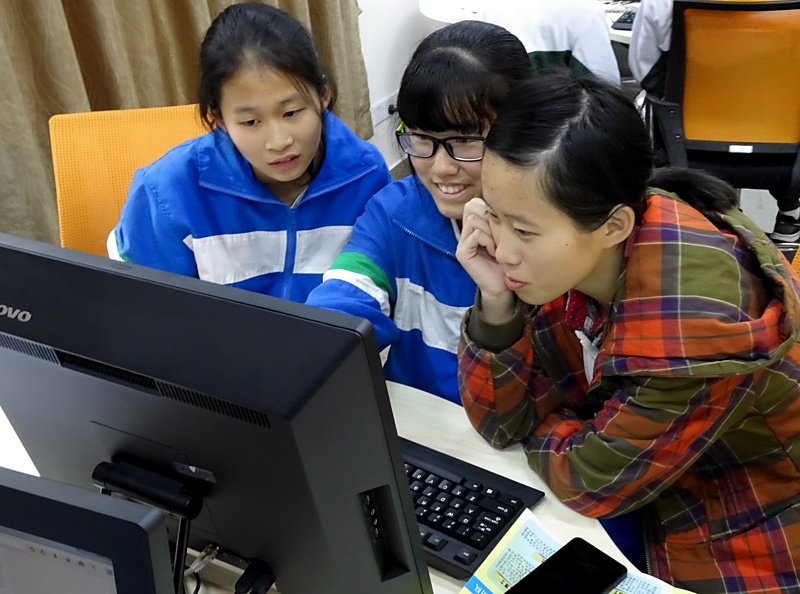An engaging PULSE@Parkes tour to Guangzhou, China for pulsar observing with high school students.

Dr Shi Dai explaining the telescope monitor from Parkes during a PULSE@Parkes observing session in Guangzhou.
Dr Shi Dai explaining the telescope monitor from Parkes during a PULSE@Parkes observing session in Guangzhou.
A busy year for CSIRO Astronomy and Space Science’s (CASS) PULSE@Parkes program ended with an exciting tour to Guangzhou, China with observing sessions, science talks and public talks.

Dr Matthew Kerr explaining pulsar observing to Guangzhou students.
Dr Matthew Kerr explaining pulsar observing to Guangzhou students.
Three CASS staff, pulsar astronomers Dr Matthew Kerr, Dr Shi Dai and PULSE@Parkes Coordinator Rob Hollow spent a week in Guangzhou, 7 – 14 December, hosted by the Center for Astrophysics at Guangzhou University. The key reason for the visit was to run hands-on observing sessions for local high school students. These sessions were held at Guangzhou University Affiliated High School who provided us with a roomy, flexible space in their library.
The three sessions saw 70 students from 7 high schools and Guangzhou University take direct control of the 64m Parkes radio telescope to observe pulsars. Working in small groups each team observed a couple of pulsars guided by Matthew. They then analysed their data using an Pulsar distance online module to determine the distance to the pulsars and map their location in the galaxy.
Most of the visiting school groups had received a preparatory talk on pulsars and radio astronomy from our local host and organiser, Dr Hongguang Wang from Guangzhou University. During the observing sessions students were able to discuss their observations with Dr Wang, CASS staff and Dr Xiaopeng You, a former CASS PhD students and now visiting from Southwest University in Chongqing. We were impressed with the quality and depth of questions from the students!
Our sessions generated keen interest from other groups across China too. All the observing sessions were webcast to Xingjiang Astronomical Observatory, Chinese Academy of Sciences where three other high schools witnessed the proceedings. High School students and students at Heibei Normal University viewed the final session online. We had many visitors in the main observing room including representatives from local astronomical societies, the Chinese Academy of Sciences and representatives from the Australian Consulate in Guangzhou.
In addition to the observing sessions Matthew and Shi gave science talks on pulsars and gravitational wave searches to students and staff at Guangzhou University on the Friday. Shi and Rob gave public talks at the impressive Guangdong Science Center, attracting a sizeable crowd for a Sunday morning. These talks highlighted the strong pulsar science work done at CASS with the Parkes radio telescope and our diverse range of education and outreach projects by CSIRO and others in Australia.

Canton Tower
Looking up Canton Tower, Guangzhou, China.
The tour was not all work though. Our hosts introduced us to the delights of regional foods from Guangdong and Hunan. After our talks at the university on Friday we visited the impressive and colourfully lit Canton Tower where we were able to gaze out across Guangzhou 488m below.
Overall the tour was a great success. We were bowled over by the warmth and welcome of our hosts and the interest by all the participants. Plans are already underway for our next trip to China in 2016.
CASS and the PULSE@Parkes team would like to acknowledge the support of the Center for Astrophysics at Guangzhou University, especially Dr Hongguang Wang for arranging the tour. It was funded by the Guangzhou Association for Science and Technology and the National Natural Science Foundation of China. Our thanks to both organisations. We also wish to thank Guangzhou University Affiliated High School for hosting out observing sessions and Guangdong Science Center for hosting our public talks. Thanks too to the students and staff from Guangzhou University and the Affiliated High School who assisted with the sessions.





